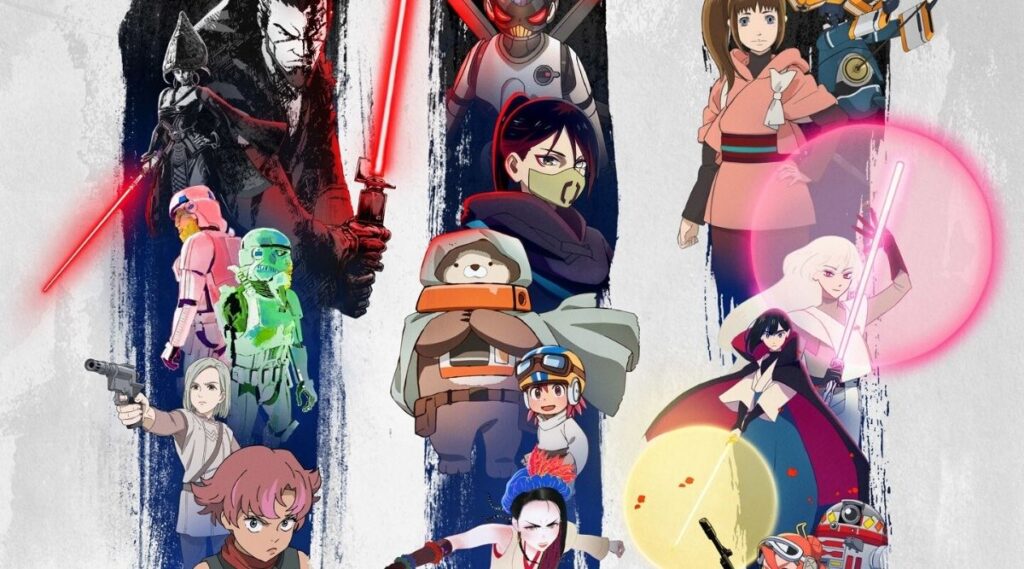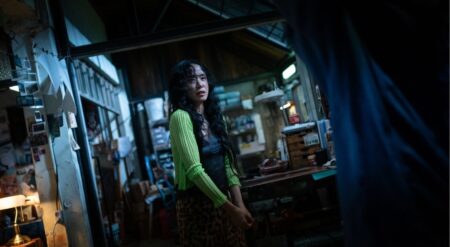In a galaxy that’s been told and retold for nearly fifty years, Star Wars: Visions remains the rare corner still brave enough to dream. After 4 years, it has become the franchise’s beating heart: a space where lightsabers hum alongside brushes, pens, and storyboards. Now, Star Wars Visions Volume 3 continues that creative legacy, narrowing its focus while deepening its impact.
If Volume 1 was about experimentation and Volume 2 was about global collaboration, then Volume 3 is about introspection. The new volume narrows its focus back to Japanese animation studios, pulling inward after the international sweep of the last anthology.
It’s smaller and less geographically diverse, but emotionally denser. And while it may not reach the transcendent highs of Volume 2, it’s still a beautiful statement on the endurance of hope, courage, and compassion across the galaxy.
Star Wars Visions Volume 3 is about more than just Jedi and Sith.
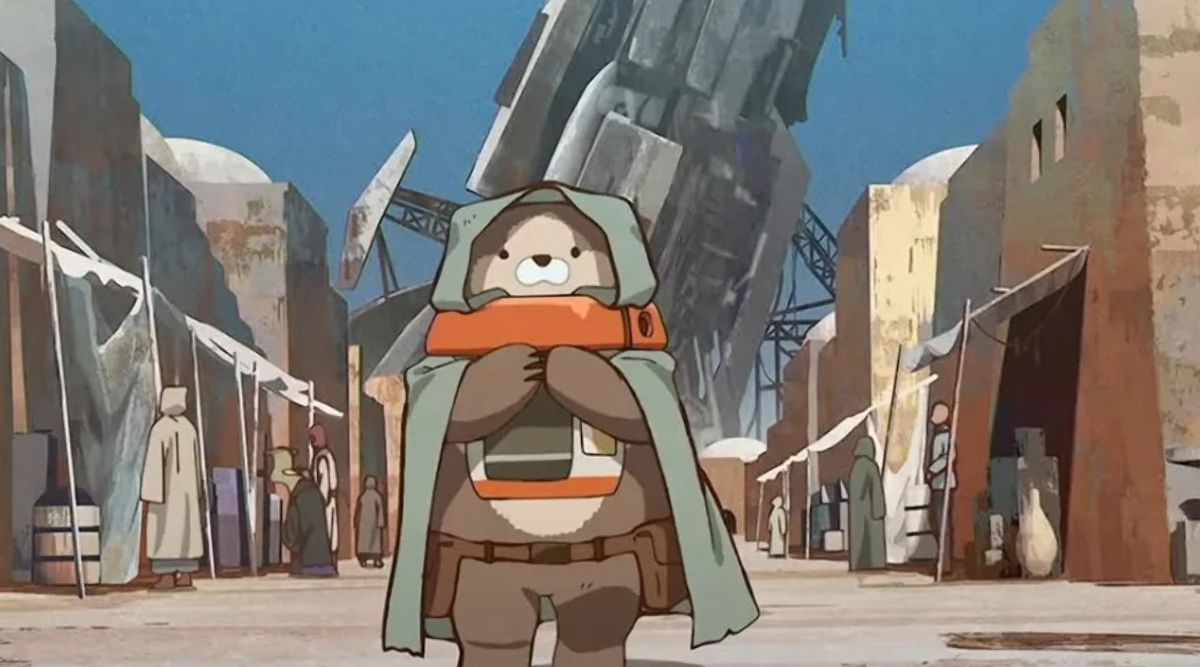
The strongest choice Star Wars Visions Volume 3 makes is pulling away from the Jedi/Sith binary. Nearly half the shorts focus on smugglers, bounty hunters, pirates, or orphans: people who don’t shape destiny through the Force, but through moral choice. It’s a smart pivot. By letting these smaller stories take the spotlight, the anthology reminds us that Star Wars isn’t just about lightsabers and lineage, it’s about survival, community, and conscience.
That breadth even extends to the Empire’s rank and file. “Black” by David Production strips away dialogue entirely and dives inside the mind of a stormtrooper. The result is an abstract meditation on guilt and identity; a visual storm of color and rhythm that turns the inner life of a faceless soldier into something painfully human. It reinforces what Visions keeps suggesting this season: the struggle between light and dark isn’t reserved for the chosen few. It lives in everyone.
Project Studio Q‘s “The Song of the Four Wings” reimagines rebellion through the lens of grief and transformation. Its protagonist, a Leia-coded princess-turned-rebel, embodies that tension between loss and hope. The shorts’ mech-anime flair (a magic-girl transformation into a literal X-wing Gundam) turns despair into spectacle. It’s absurd and heartfelt in equal measure, capturing what Visions does best: turning sincerity into power.
Morality and choice are at the heart of Star Wars Visions Volume 3.

“The Bounty Hunter” by WIT Studio finds a similar truth in simplicity. Its story of a freed slave navigating the galaxy underlines a recurring theme in this volume: the moral echo of choice. There’s no destiny here, just the question of whether to help when you don’t have to. It’s a subtle but profound reflection of what made Star Wars matter in the first place.
And “Yuko’s Treasure” offers a lighter, almost Saturday-morning take on heroism. Bright, cartoonish, and deeply human, it’s a story about found family and small acts of goodness. The Krayt Dragon chase sequence is pure fun, a reminder that even the goofiest parts of Star Wars have heart.
Across these non-Force stories, the anthology reframes heroism as something accessible to anyone. The Force might bind the galaxy, but empathy is what saves it. Still, the Jedi remain the emotional axis of Star Wars Visions Volume 3, but they’re presented with more introspection than idealization. When Star Wars Visions Volume 3 does return to the Jedi, it does so with newfound restraint and spirituality.
Several shorts are continuations from Volume 1.
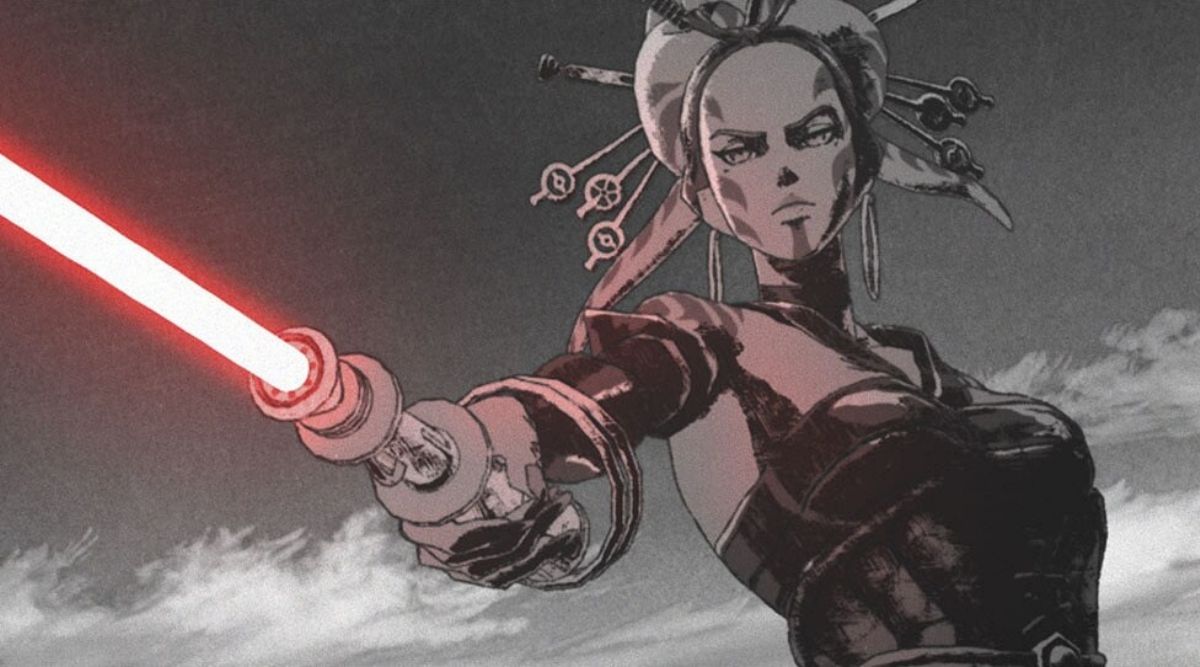
Polygon Pictures’ “The Bird of Paradise” is the standout of this thread. It’s an introspective, powerful short that visualizes the inner turmoil of a Padawan learning to let go of fear and ego. It’s The Clone Wars’ Yoda x Force Priestesses arc reinterpreted through pure animation: fluid, ethereal, and cosmic. You can almost feel the Force breathing through every gust of wind, every stone touched, and shifting color palette.
Where “The Duel: Payback” retreads old ground, “The Lost Ones” elevates what a continuation can be. Returning to F from “The Village Bride” deepens her story rather than repeating it. Through layered animation styles that differentiate past and present, we watch her confront her fallen master, a sequence as haunting as it is cathartic. F has become one of the most compelling depictions of a Jedi in recent memory: selfless, scarred, and quietly heroic.
“The Ninth Jedi” continuation closes its story on an open-ended note. It’s visually breathtaking. Its biodome setting, with a long destroyed starship, blends decay and beauty in equal measure. The story may feel lighter, but it sets the stage for a larger mythic arc.
Together, these shorts show that Star Wars Visions Volume 3 isn’t interested in lightsaber spectacle for its own sake. It’s about the inner work of staying kind in a cruel galaxy: whether you’re a Padawan, a pilot, or a stormtrooper haunted by what you’ve done.
Star Wars Visions Volume 3 returns to showcasing Japanese animation studios.

One of Star Wars Visions Volume 3’s most striking achievements is its portrayal of women. Six of the nine shorts center female leads, and none of them are defined by suffering. They aren’t symbols of tragedy: they’re agents of change. From rebellious pilots to wandering Jedi, they exist as full, self-determined characters whose power isn’t diminished by empathy.
It’s quietly revolutionary for Star Wars, where female pain has too often been the engine for male growth. Here, women get to grow on their own terms. They lead rebellions, defy oppressors, nurture, and fight. They pass every cultural test of representation without ever feeling like an afterthought.
For all its ambition, Star Wars Visions Volume 3 does feel safer than its predecessors. The return to Japanese studios gives the collection a consistent visual identity, but it also flattens the global texture that made Volume 2 so exciting. That volume proved Star Wars could thrive through completely different mythologies: Irish spirituality, Chilean surrealism, and African folklore. Here, the world feels smaller.

“The Duel: Payback” from Kamikaze Douga and ANIMA in particular struggles under the weight of expectation. The Ronin’s world is still stylish, but the short doesn’t expand its mythology. It’s a remix of past ideas rather than a new statement.
And while “The Smuggler” brings Trigger’s trademark chaos, it’s the most straightforward of the set, another “Empire bad, rebellion good” story that doesn’t linger long after it ends. None of these are bad shorts; they’re just safe. And Visions has never been about playing it safe.
Even with its narrower focus, Star Wars Visions Volume 3 maintains the soul of Visions: empathy, imagination, and rebellion through art. Its best moments (“Black,” “The Bird of Paradise,” “The Lost Ones”) rival anything from the previous volumes, proving that animation remains Star Wars’ most expressive medium.
Each short circles the same moral axes of hope and compassion.
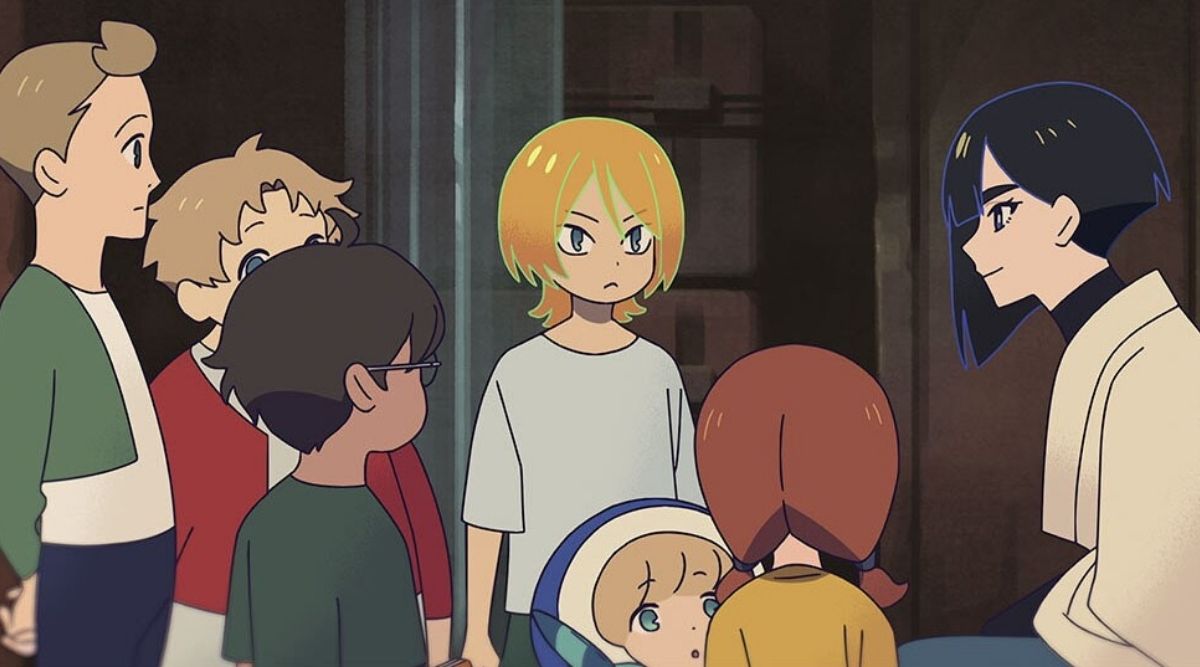
Each short, no matter the premise, circles back to the same moral axis: hope in the face of despair, compassion as defiance. That’s the through-line that binds the anthology together. It’s not about power or prophecy. It’s about choice.
Star Wars Visions Volume 3 may not reach for the same scale as its predecessors, but what it delivers feels more personal, more intimate in scope, and more human in focus. These are stories about ordinary people trying to survive extraordinary times, where heroism is measured in empathy instead of power.
What the next chapter of Visions needs isn’t just a return to global variety, but evolution. The anthology has already proven that the galaxy can hold infinite perspectives; now it can start connecting them. Imagine a future Visions where studios collaborate across continents, where styles, cultures, and philosophies overlap to create something truly new. The future shouldn’t just look different; it should feel united by curiosity and dialogue.
That’s what makes Visions special. It’s not a single vision. It’s a conversation between artists, fans, and the Force itself. Even when Star Wars Visions Volume 3 plays it safer, its compassion, creativity, and refusal to let cynicism win keep that conversation alive. Every short, whether about Jedi, smugglers, or stormtroopers, reminds us that the galaxy’s light isn’t defined by who wields the Force. It’s defined by the people who keep choosing kindness anyway.
In the end, Star Wars: Visions Volume 3 isn’t about what Star Wars has been; it’s about what it could still become. Hope isn’t a relic here; it’s a creative act.
Star Wars: Visions Volume 3 is streaming now on Disney+.
Volume 1 | Volume 2
Star Wars: Visions Volume 3
-
Rating - 8/108/10
TL;DR
Even when Star Wars: Visions Volume 3 plays it safer, its compassion, creativity, and refusal to let cynicism win keep that conversation alive.

